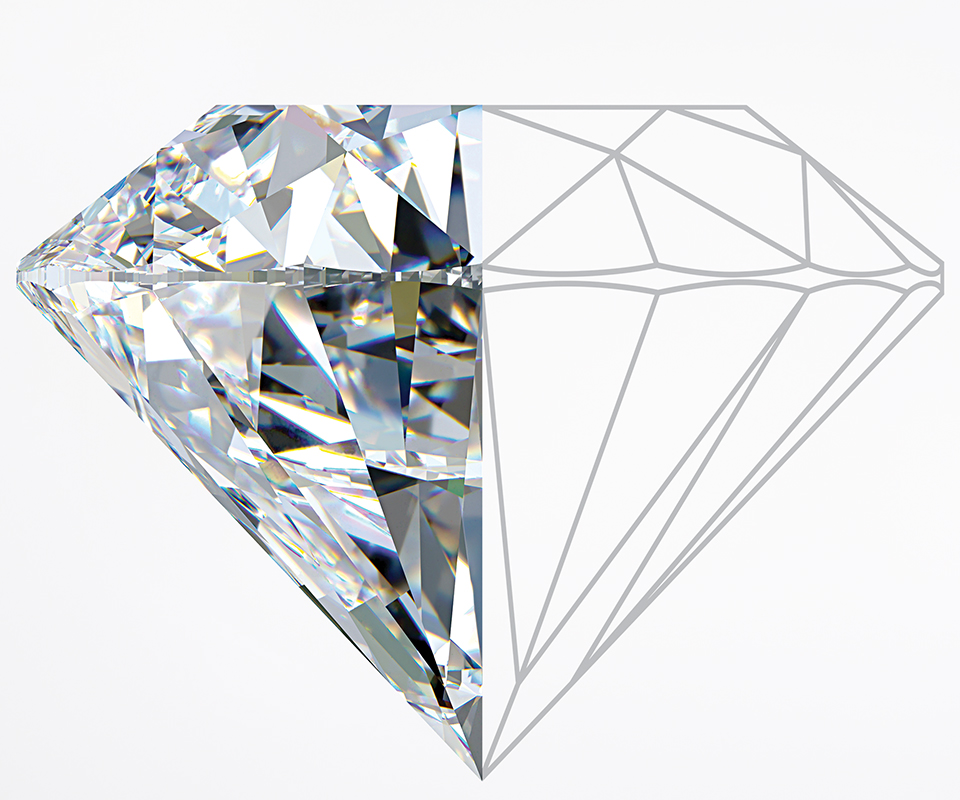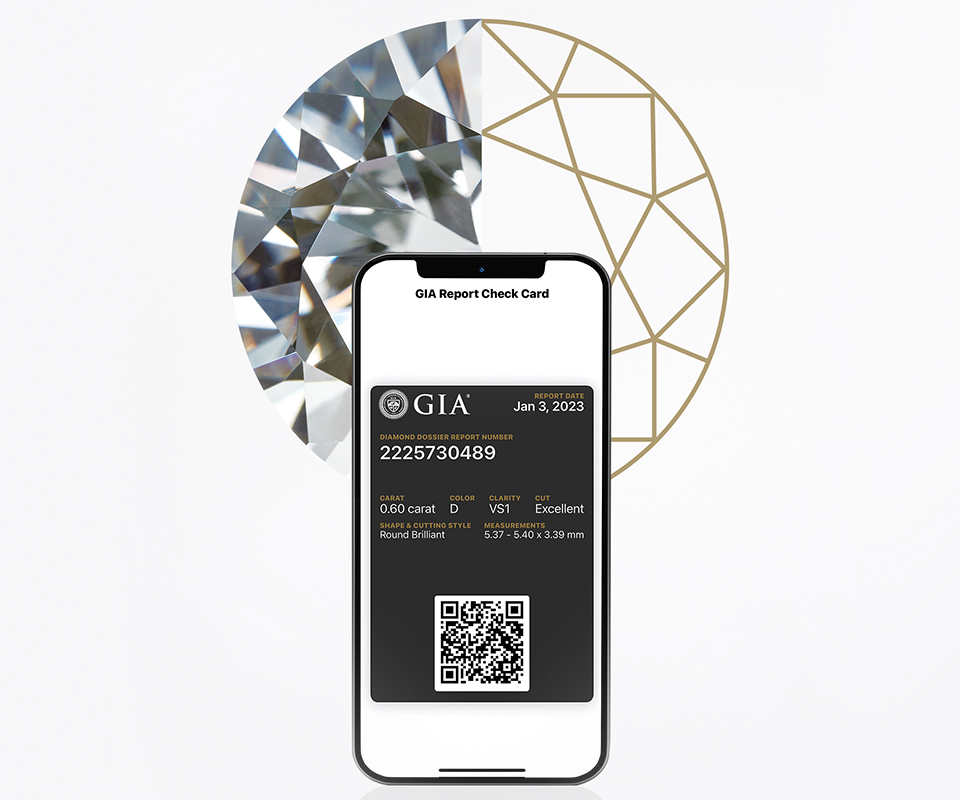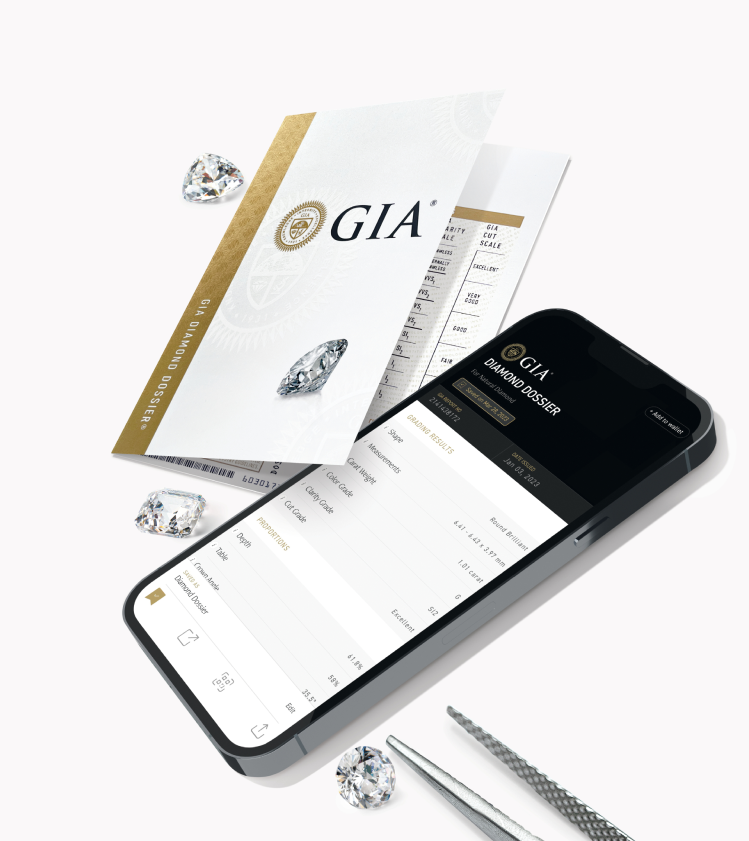The original source for diamond grading.
The original source for diamond grading.
You don’t need to be a gemologist to purchase a diamond with confidence.
You just need to know where to find one. In the global diamond industry, a GIA Diamond Grading Report is the benchmark for expert diamond grading.
For nearly 100 years, GIA has helped advance the global diamond industry through innovation and education. A GIA Diamond Grading Report is more than the standard in diamond evaluation – it is the internationally trusted source for diamond quality reporting by jewelers, museums and auction houses.
GIA created the language for diamond grading that is universally used.
GIA created the diamond grading reports that are universally trusted.
A diamond is a significant purchase. Most buyers aren’t experts. That’s where we come in. A GIA Diamond Grading Report is the best way to get an unbiased, expert evaluation of your diamond so that you can make an informed decision.
The expertise that the industry trusts.
First adopted in the 1950s, GIA reports continue to set the global standard in diamond grading. From best practices for evaluation, to accurately communicating grading results, a GIA report is the best way to ensure accuracy in your next diamond purchase.


The expertise that the industry trusts.
First adopted in the 1950s, GIA reports continue to set the global standard in diamond grading. From best practices for evaluation, to accurately communicating grading results, a GIA report is the best way to ensure accuracy in your next diamond purchase.

Types of natural diamond grading reports.
The GIA Diamond Grading Report.
This report uses the universally accepted GIA standards to determine a natural diamond’s shape, color, clarity, cut and carat weight – as well as proportions, finish and treatments. It also includes a plotted diagram which maps your diamond, identifying its unique characteristics.
The GIA Diamond Origin Report.
In addition to a full, unbiased 4Cs assessment, this report also identifies a natural diamond’s country of origin.
The GIA Diamond Dossier®.
A compact and concise version of the GIA Diamond Grading Report available for natural diamonds that weigh between 0.15 and 1.99 carats. This report includes all the important 4Cs grading results but does not include the plotted diagram.
Online-Only Reports.
The GIA Diamond eReport and the GIA Diamond Focus™ Report both include full 4Cs grading results. The GIA Diamond eReport, which includes a face-up diamond image, is available for loose, natural D-to-Z color diamonds only, weighing 0.15-2.99 carats. The GIA Diamond Focus™ Report is available for select loose, natural diamonds under 0.40 carats.
Knowing your diamond's quality is the key to making a wise purchase.
Similar to an appraisal of your home, or the registration for your vehicle, GIA reports offer unbiased information and expert documentation of your diamond. Not only will the report determine whether it is a natural diamond, but it will also assess the 4Cs of color, clarity, cut and carat weight, with disclosures for any treatments. From identifying inclusions and blemishes to determining if it has fluorescence, the best way to know your diamond is with a GIA report.
GIA is the trusted authority on diamond quality.
A GIA report can also help you prove quality should you ever wish to resell your diamond. A GIA report is the best way to evaluate and document your diamond’s unique characteristics.
GIA reports aren’t just revered by diamond buyers, they are trusted by jewelers and other diamond professionals around the globe for their impartial and accurate evaluations. Anywhere in the world, a GIA report stands for trusted quality.
As a nonprofit research and education institute, we do not sell gems or jewelry, or represent people who sell them. GIA is an independent, impartial entity that conducts research, grades diamonds and gems, and educates students, professionals and the public on the quality of these materials.
Ask your jeweler for a GIA report.
Every diamond evaluated by GIA is cataloged with a GIA report number. The data is stored in our database and can be accessed anytime through Report Check on GIA’s website.
GIA only provides diamond grading reports on unmounted diamonds, excluding simulants, mounted laboratory-grown diamonds and any laboratory-grown diamond that has received an unstable treatment. Fees are determined by the diamond’s weight. For more information or assistance, you may contact a client services representative at a GIA laboratory near you.
Expertise at your fingertips.
You don’t need to be a gemologist to purchase a diamond with confidence. You just need to know where to find one.
GIA is the trusted benchmark for diamond grading. Download the GIA App now to learn more about the 4Cs and look up GIA reports.


Expertise at your fingertips.
You don’t need to be a gemologist to purchase a diamond with confidence. You just need to know where to find one.
GIA is the trusted benchmark for diamond grading. Download the GIA App now to learn more about the 4Cs and look up GIA reports.
Expertise at your
fingertips.
You don’t need to be a gemologist to purchase a diamond with confidence. You just need to know where to find one.
GIA is the trusted benchmark for diamond grading. Download the GIA App now to learn more about the 4Cs and look up GIA reports.
GIA Report Check
Access your GIA Grading Report results using your GIA report number.